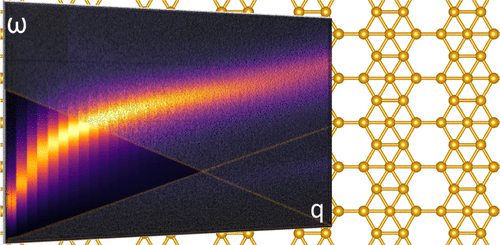当前位置:
X-MOL 学术
›
J. Am. Chem. Soc.
›
论文详情
Our official English website, www.x-mol.net, welcomes your
feedback! (Note: you will need to create a separate account there.)
Two-Dimensional Boron Polymorphs for Visible Range Plasmonics: A First-Principles Exploration
Journal of the American Chemical Society ( IF 14.4 ) Pub Date : 2017-11-14 00:00:00 , DOI: 10.1021/jacs.7b10329 Yuefei Huang 1 , Sharmila N. Shirodkar 1 , Boris I. Yakobson 1
Journal of the American Chemical Society ( IF 14.4 ) Pub Date : 2017-11-14 00:00:00 , DOI: 10.1021/jacs.7b10329 Yuefei Huang 1 , Sharmila N. Shirodkar 1 , Boris I. Yakobson 1
Affiliation

|
Recently discovered two-dimensional (2D) boron polymorphs, collectively tagged borophene, are all metallic with high free charge carrier concentration, pointing toward the possibility of supporting plasmons. Ab initio linear response computations of the dielectric function allow one to calculate the plasmon frequencies (ω) in the selected example structures of boron layers. The results show that the electrons in these sheets indeed mimic a 2D electron gas, and their plasmon dispersion in the small wavevector (q) limit accurately follows the signature dependence ω ∝ √q. The plasmon frequencies that are not damped by single-particle excitations do reach the near-infrared and even visible regions, making borophene the first material with 2D plasmons at such high frequencies, notably with no necessity for doping. The existence of several phases (polymorphs), with varying degree of metallicity and anisotropy, can further permit the fine-tuning of plasmon behaviors in borophene, potentially a tantalizing material with utility in nanoplasmonics.
中文翻译:

可见光波等离子体的二维硼多晶型物:原理探索
最近发现的二维(2D)硼多晶型物,被共同标记为borophene,全都是金属,具有高自由电荷载流子浓度,这表明有可能支撑等离激元。介电函数的从头开始线性响应计算使人们可以计算硼层的选定示例结构中的等离子体激元频率(ω)。结果表明,在这些片材确实模拟二维电子气,并且在小波矢其等离子体分散体中的电子(q)极限准确地跟随签名依赖ωα√ q。不受单粒子激发抑制的等离激元频率确实到达了近红外甚至可见光区域,从而使硼烷成为具有如此高频率的二维等离激元的第一材料,尤其是不需要掺杂。具有不同程度的金属性和各向异性的几种相(多晶型物)的存在可以进一步允许对硼苯中的等离激元行为进行微调,这可能是在纳米等离激元中有用的诱人材料。
更新日期:2017-11-16
中文翻译:

可见光波等离子体的二维硼多晶型物:原理探索
最近发现的二维(2D)硼多晶型物,被共同标记为borophene,全都是金属,具有高自由电荷载流子浓度,这表明有可能支撑等离激元。介电函数的从头开始线性响应计算使人们可以计算硼层的选定示例结构中的等离子体激元频率(ω)。结果表明,在这些片材确实模拟二维电子气,并且在小波矢其等离子体分散体中的电子(q)极限准确地跟随签名依赖ωα√ q。不受单粒子激发抑制的等离激元频率确实到达了近红外甚至可见光区域,从而使硼烷成为具有如此高频率的二维等离激元的第一材料,尤其是不需要掺杂。具有不同程度的金属性和各向异性的几种相(多晶型物)的存在可以进一步允许对硼苯中的等离激元行为进行微调,这可能是在纳米等离激元中有用的诱人材料。











































 京公网安备 11010802027423号
京公网安备 11010802027423号